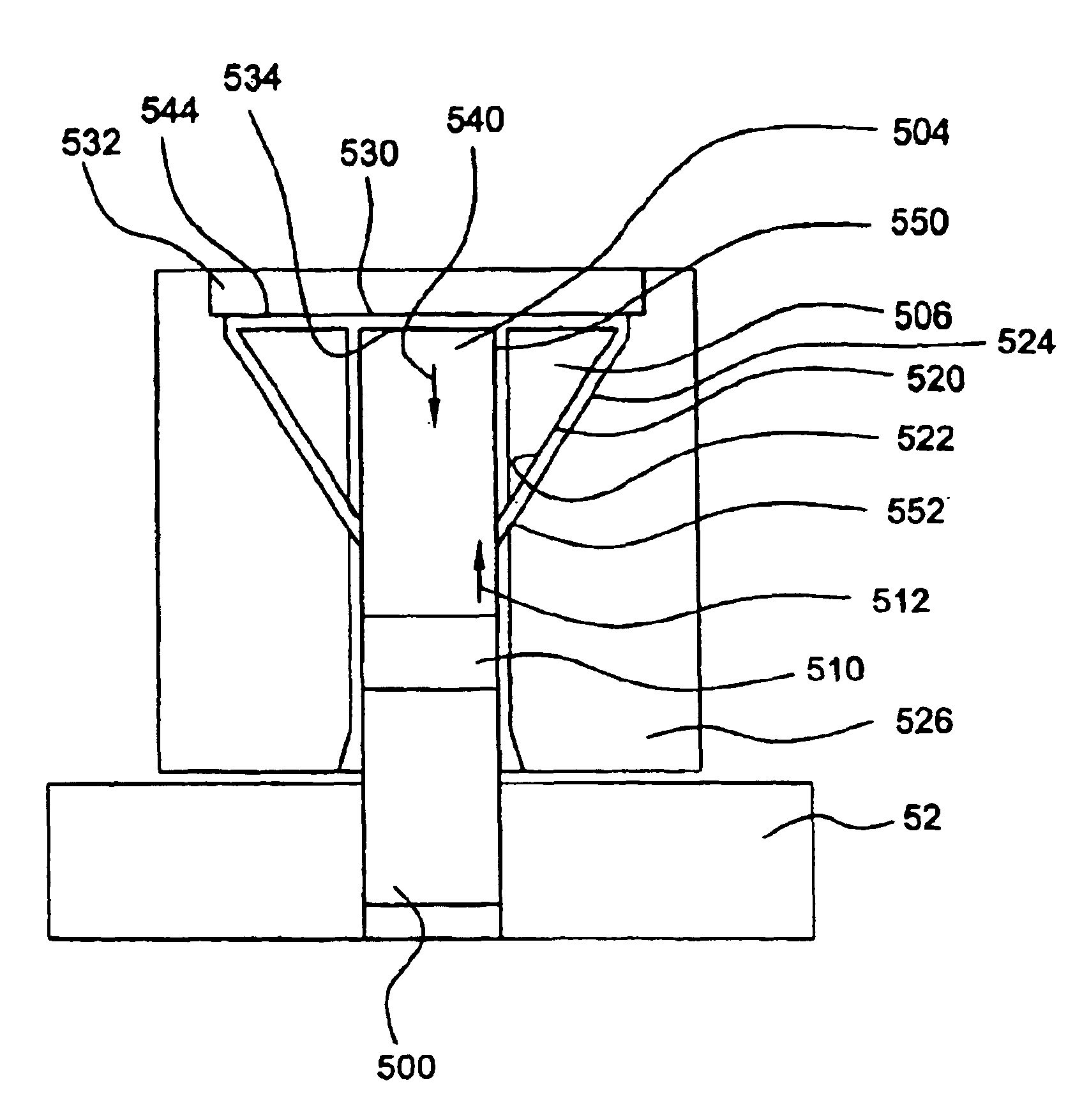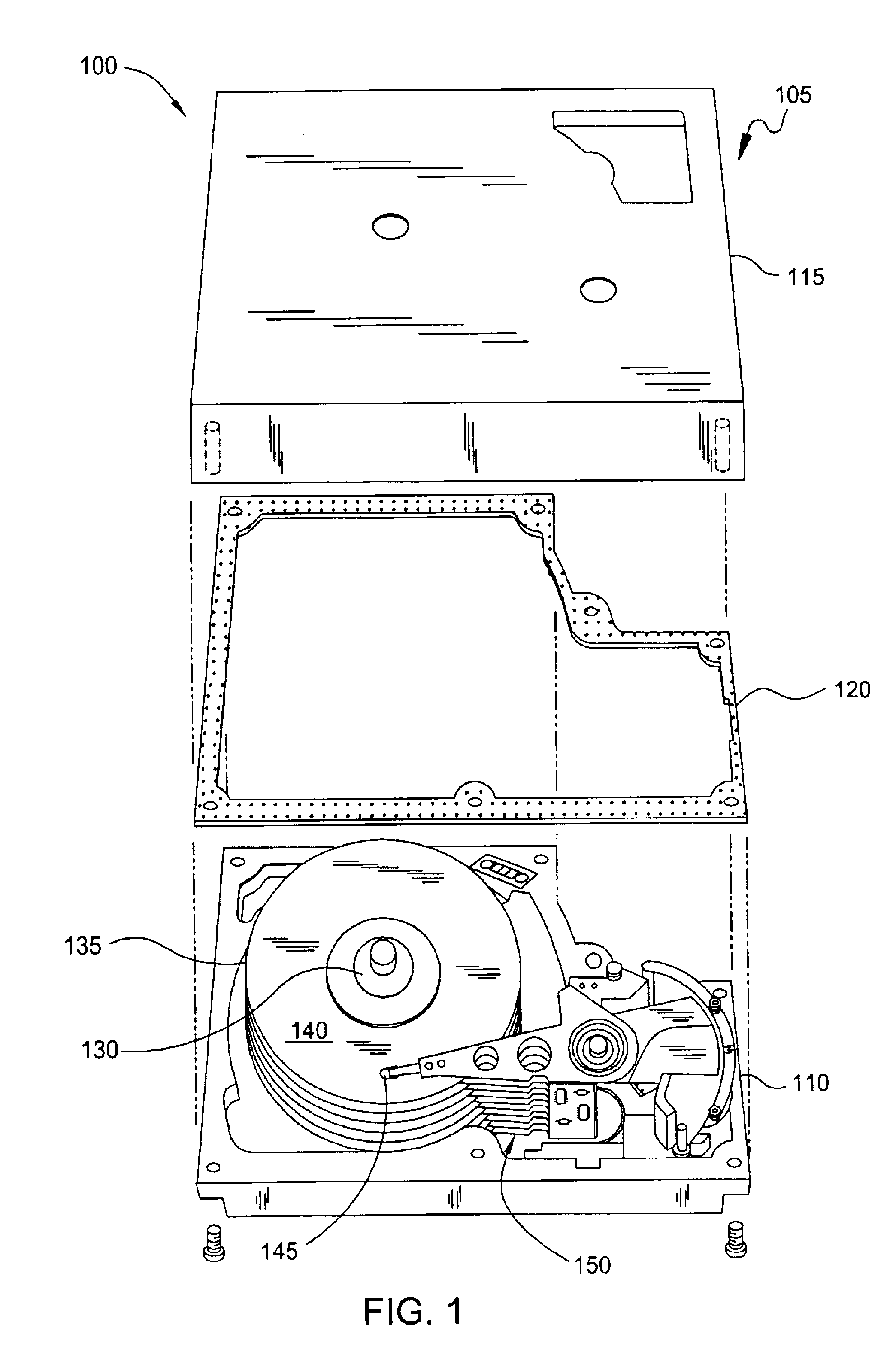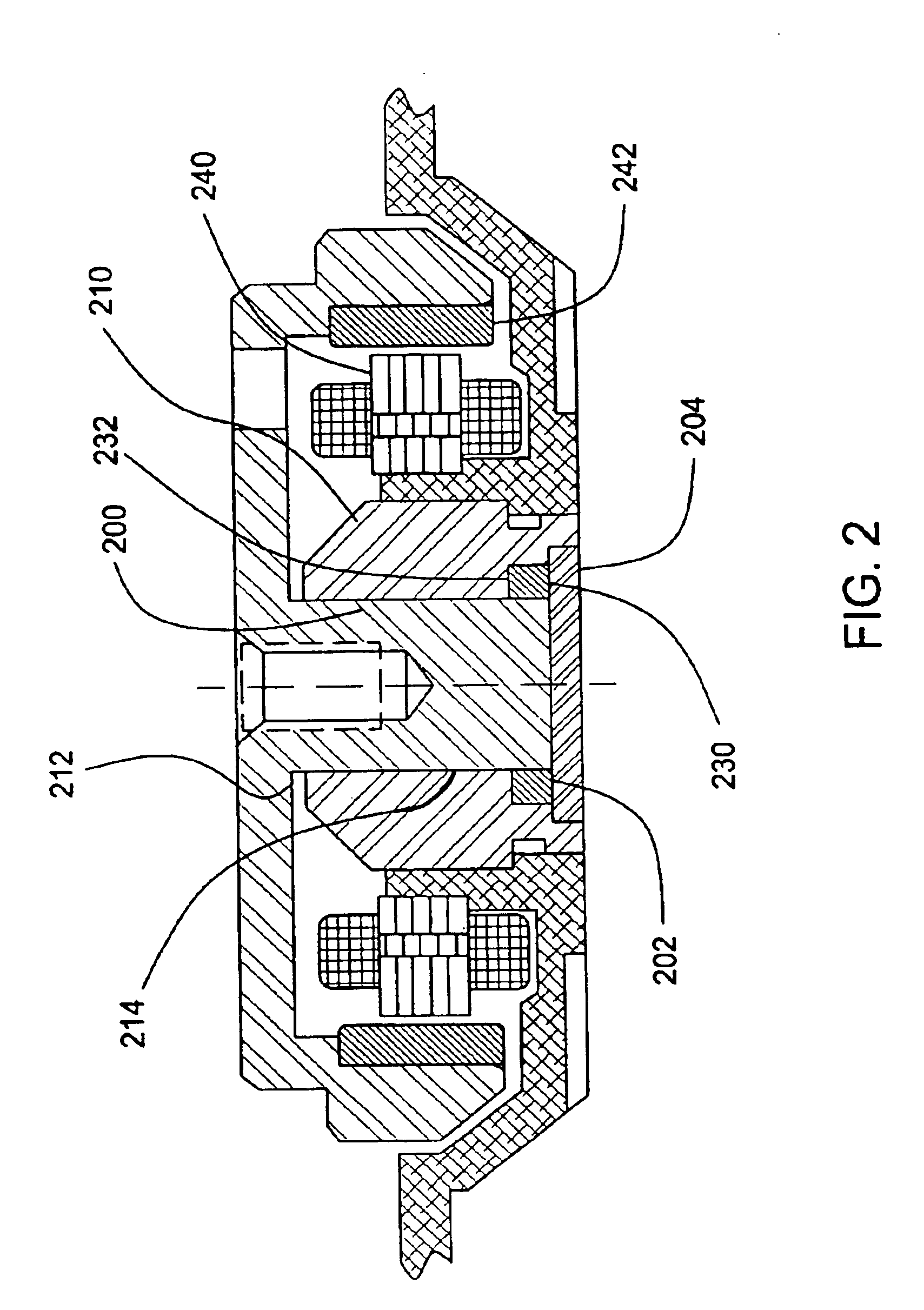Conical hybrid FDB motor
a hybrid, conical technology, applied in sliding contact bearings, instruments, record information storage, etc., can solve the problems of physical contact, vibration generation, and the proneness of the above-mentioned bearing system,
- Summary
- Abstract
- Description
- Claims
- Application Information
AI Technical Summary
Benefits of technology
Problems solved by technology
Method used
Image
Examples
Embodiment Construction
[0034]The following description of a preferred embodiment of the invention is given with reference to its use in a disc drive, since disc drives are especially directed to incorporating motors of a low profile. However, the present invention may also be useful in many other formats and environments.
[0035]Thus, as an exemplary environment for use in the present invention, FIG. 1 shows an exploded perspective view of a disc drive storage system in which the present bearing and motor would be useful. FIG. 1 is provided primarily to give an illustrative example of the environment in which a motor incorporating the bearing comprising the features of the present invention is used; clearly, the motor could be used equally well in other designs of disc drives, or other operating environments apart from disc drive technology where minimizing the start and run power for the motor, and / or minimizing the overall height of the motor is a desirable feature.
[0036]More particularly, in FIG. 1 the s...
PUM
 Login to View More
Login to View More Abstract
Description
Claims
Application Information
 Login to View More
Login to View More - R&D
- Intellectual Property
- Life Sciences
- Materials
- Tech Scout
- Unparalleled Data Quality
- Higher Quality Content
- 60% Fewer Hallucinations
Browse by: Latest US Patents, China's latest patents, Technical Efficacy Thesaurus, Application Domain, Technology Topic, Popular Technical Reports.
© 2025 PatSnap. All rights reserved.Legal|Privacy policy|Modern Slavery Act Transparency Statement|Sitemap|About US| Contact US: help@patsnap.com



